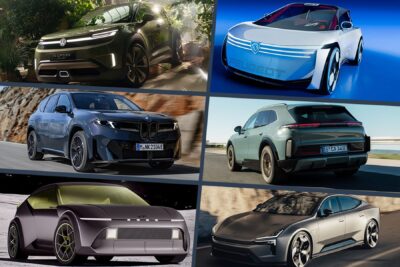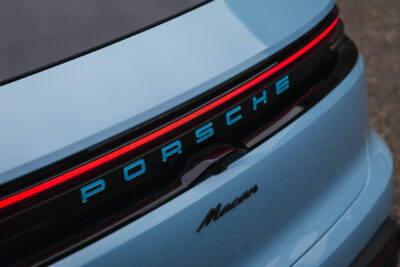Xpeng prices new P7 in China at the equivalent of €26,400
The new Xpeng P7 is available in China in four trim levels at prices ranging from 219,800 to 301,800 yuan (around 26,400 to 36,200 euros). The electric car manufacturer unveiled the new edition of the electric sedan at the beginning of the month – since then, the most important technical data has been made public. The electric model, now based on an 800-volt architecture, charges at up to 486 kW and offers a range of up to 820 kilometres according to the Chinese test cycle. In addition to its elegant design and huge head-up display, the significant increase in size is also striking.
According to CarNewsChina, among others, 10,000 firm orders for the new P7 were received within seven minutes. Chinese portals always eagerly await consumer orders measured in minutes and consider them a measure of success. However, it remains to be seen whether the model will really become a bestseller in China.
With a length of 5.02 metres, a width of 1.97 metres and a height of 1.43 metres, the sedan is in the upper mid-range class and is twelve centimetres longer than its direct predecessor. The wheelbase is a generous three metres, which should provide plenty of legroom in the interior. Otherwise, Xpeng has fully geared the interior towards high tech. The cockpit is dominated by a 15.6-inch touchscreen that can be moved or rotated on three axes.
What else? In addition to a narrow display for driving information, Xpeng has equipped its large sedan with a wide 87-inch head-up display featuring Huawei technology and augmented reality functions. In addition to touch controls, the manufacturer is relying on an AI-supported voice assistant. Xpeng has installed a total of three Turing AI chips developed in-house in the P7, with a combined computing power of 2,500 TOPS. They not only support the infotainment system and navigation, but also the assistance systems that enable Level 3 autonomous driving functions.







German competitors would be the BMW i5 or the Mercedes EQE, for example. Unlike these, however, the Xpeng P7 is based on an 800-volt architecture that enables 5C charging and a maximum charging power of 486 kW. According to the manufacturer, this should allow enough power to be recharged for 525 kilometres in just ten minutes – at least in the Chinese CTLC standard test. It goes from 10 to 80 per cent in 11.3 minutes. In its home market, the P7 competes with the Xiaomi SU7, the Zeekr 001 and the BYD Han L, among others.
Xpeng offers the sedan with two different batteries, which have a capacity of 74.9 or 92.2 kWh. Depending on the version, the range according to the Chinese CLTC standard is between 702 and 820 kilometres. The latter figure refers to the ‘RWD Long Range’ variant. However, Xpeng will not only offer the P7 as a pure rear-wheel drive, but also with electric all-wheel drive, i.e. with one motor on each axle, and a range of 750 kilometres.
The basic rear-wheel drive version has 270 kW, while the all-wheel drive P7 has 437 kW and is said to sprint from zero to 100 in just 3.7 seconds. However, the sedan is not only designed to be fast, but also comfortable. That is why the Chinese manufacturer is installing dual-chamber air suspension with level control as standard.
Despite their almost identical names and similar dimensions, the new P7 and the P7+ unveiled in spring are not the same model. The P7+ is less focused on high tech and sportiness, but with its generous space, is primarily aimed at families who prefer a sedan with a large tailgate to an SUV or van. The P7+ costs between 186,800 and 208,800 yuan in its home country.
The P7, on the other hand, is positioned at a higher price point. The lower price point is set by the rear-wheel-drive Xpeng P7 720 with a small battery, which costs 219,800 yuan. Above that is the Xpeng P7 820 with a large battery for 239,800 yuan. Higher up the range is the all-wheel-drive Xpeng P7 750 AWD for 259,800 yuan and the analogue AWD model with scissor doors (301,800 yuan).
As the predecessor is also available in Europe, it can be assumed that the second edition of the P7 will also be offered in Europe with a slight time lag. However, due to EU punitive tariffs on Chinese electric cars and the import costs incurred, the model is likely to be significantly more expensive.
carnewschina.com, cnevpost.com
This article was first published by Cora Werwitzke for electrive’s German edition.




0 Comments